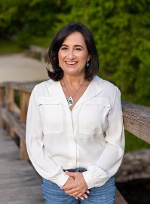
Here are several ways to support one's recovery including following a Lyme diet, detoxing, and listening to your body.
If you’ve been diagnosed with Lyme disease, the most pressing question you probably have is, when will I get better? I wish there was a simple answer, but because every case of Lyme disease is different, healing looks different for each patient. If your Lyme disease was diagnosed right away, chances are you’ll feel better after a short course of antibiotics (though some 10-20% of early Lyme disease patients struggle with persistent symptoms after treatment). If you were diagnosed at a later stage of the disease, the infection will be harder to treat, particularly if it is complicated by co-infections. Recovery also depends on your own immune system, how you respond to treatment, and any other co-morbidities you may have.
What is healing from Lyme disease and why does it matter?
The second part of this question is obvious: it matters because you want to resume your life! The first part is a bit more nuanced. Everyone wants to feel 100% better and be able to do everything they could before they got sick. If you have a clear-cut case of early localized Lyme disease, you may very well reach this goal. If your Lyme disease took a long time to get diagnosed, crossed the blood-brain barrier, is complicated by co-infections, or if other factors make your case more complex, recovery may not be so easy.
My own healing journey from Lyme disease, babesiosis, ehrlichiosis, possible bartonella, and also chronic active Epstein-Barr virus has been circuitous. Bitten by a tick in 1997 but not accurately diagnosed until 2005, I did a year of intense treatment before achieving remission. I then had a complete relapse, and it took another couple years to get back to remission. Since then there have been minor flare-ups, and though I am much, much better than I was in 2005—living a very full life with minor limitations—I am not back to the point I was pre-illness. I have, however, seen improvement every year, and have learned some tricks for promoting my own healing:
Define healing for yourself
It may help to write out your goals for healing. What would you like to be able to do again? How do you want to feel physically? If you want to get back to work, does it need to be the same job you were doing previously, or is there something else that might be better for your schedule or your neurological symptoms? If you want to exercise, is there a particular sport you want to get back to? If you’re struggling with fatigue, might you eventually be able to do that sport in an adaptive way? Is there another sport that is less strenuous but that might give you the same satisfaction?
For years, I fought to get back to my old life. I didn’t really start healing from Lyme until I accepted that with a case as severe as mine, there was no going back. Instead, I needed to create a new normal in the context of chronic illness. When I first achieved remission, I was probably at about 60% recovery, with my mind set on 100%. By pushing myself too hard, I quickly went back to 0. Now that I’ve made lifestyle changes like working flexible part-time jobs and sticking to good sleep hygiene, I am probably at 85%. Though I never want to settle, being realistic about my capabilities—and finding new ways to lead a happy life—have helped me to maintain consistent good health.
Find the right medical help
Some 40% of Lyme disease cases are not diagnosed until a later stage of the disease [i]. Exhausted patients go from doctor to doctor in search of answers—and validation. Getting to a Lyme Literate Medical Doctor (LLMD) can help speed up the diagnostic process, and ensure that you are being evaluated for all tick-borne illnesses, not just Lyme disease.
You also want to make sure the rest of your medical team is supportive of your diagnosis and treatment. This includes everyone from your primary care doctor to your dentist; each should understand how your Lyme disease and its treatment affect acute conditions for which they might see you. (Check out these tips on how to be an advocate with your non-Lyme doctor).
Finally, you want to make sure that all aspects of your health are being cared for. Your LLMD may be able to treat the emotional and psychological effects of Lyme disease, but it also may be good to see a psychiatrist or therapist. As you start to get better, you might also want to add a physical therapist to your team.
Vary treatment
While a short course of antibiotics clears up a Lyme disease infection for some patients, for others, it takes time to find the right cocktail of medications. A good LLMD will know which antibiotics are best for the specific symptoms you’re experiencing, and may use more than one. Some will try oral antibiotics first and then switch to intravenous antibiotics. Some patients find that they improve on medication for a while, but then plateau; it might then be time to try something new. In his book Chronic: The Hidden Cause of the Autoimmune Pandemic and How to Get Healthy Again, Dr. Stephen Phillips talks about pulsing antibiotics (taking antibiotics for a period of time, then stopping to detox, then starting again).
Antibiotics kill Lyme disease bacteria (spirochetes), but other medications are often needed to promote fuller healing. These can include antimalarials, anti-inflammatories, psychiatric medication to treat anxiety and depression, and nutritional supplements. Some patients also use alternative treatments like homeopathic supplements, rife machines, or hyperbaric oxygen chambers. Because there is no set protocol for treating Lyme disease, it’s important to talk with your LLMD to determine what is best for your particular case.
Explore adjunct therapies
In addition to pharmaceutical medication and alternative treatments, certain adjunct therapies helped support my healing journey. These included physical therapy, integrative manual therapy, and neurofeedback, the latter two of which I still do as part of my maintenance routine. Here is more information about some of the adjunct therapies that have worked well for me; talk to your LLMD about complementary therapies that might promote your own healing.
The “Lyme diet”
Researchers are looking at the way Lyme disease impacts the microbiome. More and more, we are seeing how diet impacts our health. After all, “you are what you eat.” Because Lyme is an inflammatory disease, it can help to follow an anti-inflammatory diet. For me, this means avoiding gluten and sugar; for others, it includes eliminating dairy. Your LLMD may suggest other dietary changes, or may recommend supplements to replenish nutrient loss. Most importantly, think about nourishing your body: eating foods that will promote, not detract from, healing.
Detox
Lyme disease treatment can cause a Jarisch-Herxheimer reaction, or “Herx,” when the antibiotics kill bacteria faster than your body can eliminate them. This can make you to feel worse before better. To promote detox, you may need to give your body breaks from antibiotics, whether it’s a few days here and there, or actual pulsing (these breaks should always be done under advisement of your LLMD). Your LLMD may also give you a specific detox protocol, or have you use green tea or lemon juice. Be sure to drink plenty of water!
Listen to your body
When all we want is to get back to our usual lives, it can be hard to listen when our bodies tell us to rest. I have learned the hard way that attempting to push through symptoms and keep going only makes me feel much, much worse. It’s better to pace yourself, to work up slowly to reentry, than to crash and burn. And remember that no one knows your body better than you do. Well-meaning caregivers might encourage you to go for a walk, or to get out and volunteer. But they don’t know how you really feel. They would not do those things with the flu, and you don’t need to do them with Lyme disease until you are ready.
You will have good days and bad days as you recover from Lyme disease. Think of yourself as climbing a spiral staircase. Sometimes, you need to stop and rest at a landing. Sometimes, you may slip back a few steps. But as circuitous as it is, that staircase is ever moving upwards. Following these tips to promote healing should help you ascend faster!
The above material is provided for information purposes only. The material (a) is not nor should be considered, or used as a substitute for, medical advice, diagnosis, or treatment, nor (b) does it necessarily represent endorsement by or an official position of Global Lyme Alliance, Inc. or any of its directors, officers, advisors or volunteers. Advice on the testing, treatment or care of an individual patient should be obtained through consultation with a physician who has examined that patient or is familiar with that patient’s medical history.
[i] Bobe, Jutras, B. L., Horn, E. J., Embers, M. E., Bailey, A., Moritz, R. L., Zhang, Y., Soloski, M. J., Ostfeld, R. S., Marconi, R. T., Aucott, J., Ma'ayan, A., Keesing, F., Lewis, K., Ben Mamoun, C., Rebman, A. W., McClune, M. E., Breitschwerdt, E. B., Reddy, P. J., … Fallon, B. A. (2021). Recent Progress in Lyme Disease and Remaining Challenges. Frontiers in Medicine, 8, 666554–666554. https://doi.org/10.3389/fmed.2021.666554

Jennifer Crystal
Writer
Opinions expressed by contributors are their own. Jennifer Crystal is a writer and educator in Boston. Her work has appeared in local and national publications including Harvard Health Publishing and The Boston Globe. As a GLA columnist for over six years, her work on GLA.org has received mention in publications such as The New Yorker, weatherchannel.com, CQ Researcher, and ProHealth.com. Jennifer is a patient advocate who has dealt with chronic illness, including Lyme and other tick-borne infections. Her memoir, One Tick Stopped the Clock, was published by Legacy Book Press in 2024. Ten percent of proceeds from the book will go to Global Lyme Alliance. Contact her via email below.